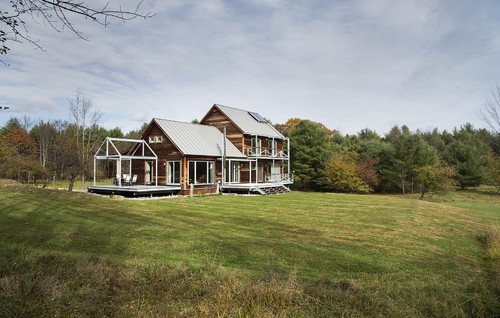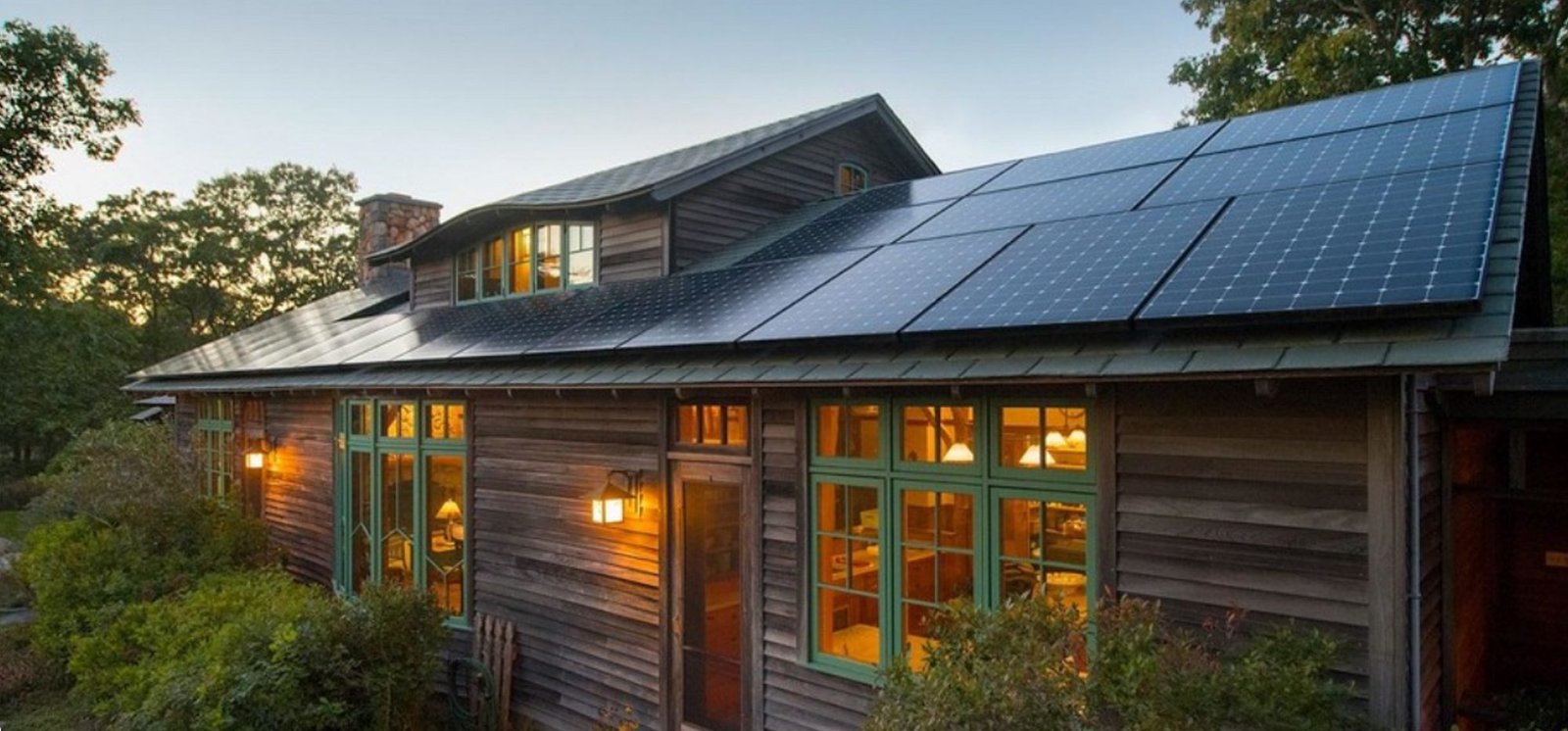Sun can be used not only for energy production or heating but also for cooling your home in the hot summer days.
Today, solar cooling can be achieved by three methods:
1. Passive Solar Cooling
2. Solar Thermal Cooling
3. Photovoltaic Cooling

Photo by ZeroEnergy Design – Discover exterior home design ideas
1. Passive Solar Cooling
Passive Cooling principle is completely different from the following two methods.
As the name suggests, it is a passive principle that is based on design techniques, in order to reduce the impact of sun heat on your home.
It is a smart idea and using this principle in your home and landscape design will reduce your energy bill.
What is the Cost of Solar Energy for You – Tips and Ideas (howtobuildahouseblog.com)
What are the basic ideas of this principle?
The basic idea is that with “Passive Solar Cooling” you do not use mechanical systems. Mainly you should apply some basic principles in your home design. Of course, these principles will be applied depending on the climate and the area where you live.
Let’s see what you have to take into account:
a) House Orientation
If you live in a cold climate, you need the sun to heat your home. On the contrary, if you live in a hot area, you need to reduce the sun’s heat, and even, to cool your home.
By orientation, your home can expose only a small area to the impact of sunlight, can take advantage from the sunrays inclination and can benefit from the direction of the winds.
These combined factors will help you to cool your home.
b) Shading
Shading helps you to adjust and control the natural light intensity and temperature of your home.
Shade can be created by the home structural elements and by the surrounding landscape.
c) Home Insulation
Your home insulation is the main factor in maintaining a cool home. The thickness of the insulation, insulation quality and the way it was performed will be crucial in protecting your home from sun heat.
d) Thermal Mass
Thermal mass means the house property to store the sun’s heat, during the day. This heat gain will be gradually released during the night.
e) Windows
Of course, windows have a word to say in the solar heat gain. Their quality, their number of glazing, will make a big difference in the exchange of heat between the interior and exterior of your home.
f) Natural Ventilation
Through a good design, your home can benefit from an adequate natural ventilation.
Passive Solar Applications
In fact, we can say that “Passive Solar Energy” allow three application. One of them is “Passive Solar Cooling” that we exposed it above.
Another two applications of this principle are:
- – “Passive Solar Heating”
- -“Daylighting”
2. Solar Thermal Cooling
The main application of this principle is in commercial area. However, there are an increasingly requirement, in residential area.
What is the basic idea of this principle?
The principle is simple. A “solar energy collector” captures the sunlight and converts its energy into heat and this heat can be used successfully in home cooling.
However, there are two applications in the residential area where this principle can be used:
- a) Solar Absorption Cooling:
Solar heated water will drive your air conditioner. This air conditioner has a liquid with two components a refrigerant and an absorbent.
Solar heated water separates these two components and compresses the refrigerant.
Then, the compressed refrigerant is evaporated creating a cooling effect.
Then, the refrigerant is combined again with the absorbent and cycle continues.
- b) Solar Desiccant Cooling
This system does not use the solar heated water to drive an air conditioner.
The principle is to remove all the moisture from the air. In this way, until it becomes the level of humidity in your home is reduced.
A specific material “desiccant” with absorbent qualities will absorb the moisture from the air.
This absorption continues until the desiccant becomes saturated.
Then the solar heat dry the desiccant evaporating the moisture outside the home and the cycle resumes.
3. Solar Photovoltaic Cooling
Photovoltaic cooling system is based on electricity produced by “PV Solar Panels” (PV Panels).
These panels capture the sunlight using photovoltaic cells. Photovoltaic cells convert the sunlight into electricity, which can run different household appliances, including air conditioners or roof vents.
In fact, having an attic (roof) vent and cooling your attic you can seriously reduce the home cooling expenses.
CONCLUSION
Obviously, house cooling is necessary for those who live in areas with long hot summers. And not only.
In fact, it is your choice which system to choose. Passive Solar Cooling is a great conception but unfortunately can be used effectively for new buildings.
However, it is OK to use any of these systems. The advantages are obvious.


